AIRPORT - WINDHOEK (ca. 44km / 0:35h)
After arrival at the Windhoek International Airport, your journey starts immediately with the journey to Windhoek. If time permits, you can take a sightseeing tour of Windhoek's most important sights. Windhoek is the capital and economic and political centre of Namibia. Windhoek is considered one of the cleanest capitals in Africa, with a mix of European and African influences. The city is regarded as an exemplary social model of an African city due to its social security and the coexistence of the Namibian ethnic groups, but it also looks quite contemplative.
In the street scene of the city centre, small street cafés and beer gardens convey the character of a Central European city, with a building fabric that - in addition to many modern buildings - is characterised by Wilhelminian colonial architecture from the turn of the century. Important sights are the Marien-Kathedrale (1908), the Christuskirche (1911) and the Tintenpalast (1912). Since independence, numerous buildings based on African architecture have been built, such as the new Supreme Court building (1990). Windhoek's museums and galleries offer exhibitions on the country's cultural history, geology, traditional and contemporary art, including the National Museum, the TransNamib Museum and the National Gallery. Typical for Windhoek are also street vendors who offer small handicrafts.
Windhoek was first documented in 1840 and founded as a modern city in 1890. The name Windhoek is Afrikaans and derives from "Windecke" or "windy corner".
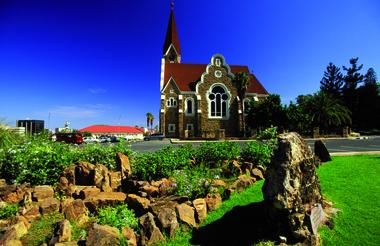
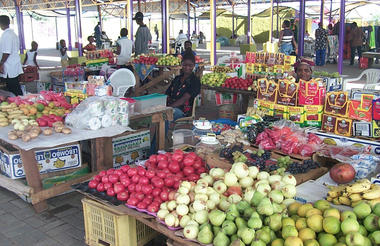
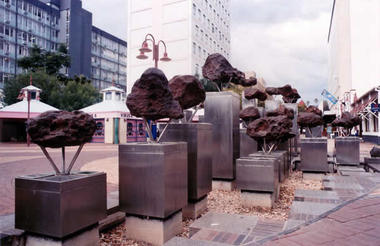
WINDHOEK - MUSHARA LODGE (ca. 520km / 05:00h)
Your first destination on this trip is Etosha National Park. The trip takes you via Okahandja, Outjo and Tsumeb, a mining town, to Etosha National Park. You can visit Lake Otjikoto just outside Tsumeb.
Lake Otjikoto is a karst lake in northern Namibia, near the mining town of Tsumeb. It is one of only two permanently water-filled lakes in Namibia and the twin lake of Guinassee, 15 kilometres away. It is thought to be connected to this lake by an underground cave-water system. Lake Otjikoto was discovered in 1851 by Charles John Andersson and Francis Galton and measures approximately 100 × 150 metres. Otjikoto means deep hole in the Herero language; in fact the lake is about 76 meters deep filled with water.
During the First World War, the German Schutztruppe sank weapons and ammunition into the lake so as not to leave them to the enemy. Lake Otjikoto has been a national monument in Namibia since 1955.
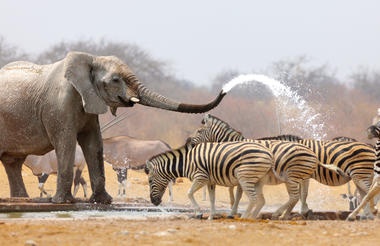
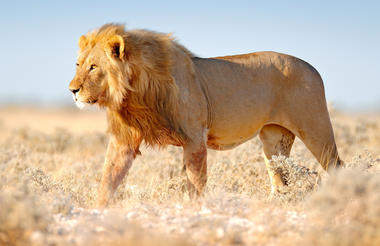
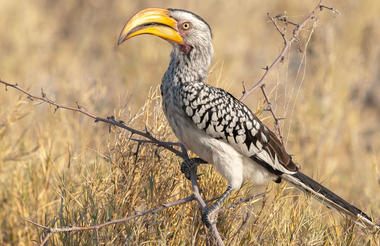
ETOSHA
You have time for a full day game drive in Etosha National Park. With a little luck you will see a few elephants, lions and giraffes. The Etosha National Park is a 22,275 square kilometre national park in the north of Namibia and the most important of its kind in Namibia.
Protected area of the country. The park is located on the north-western edge of the Kalahari Basin and includes almost the entire 5,000 square kilometre Etosha pan. The name "Etosha" originates from the Oshivambo and means as much as "big white square."

ETOSHA
Another day game drive in Etosha National Park. You can either go on your own with your rental car or book a drive in an open safari truck with a trained ranger. You will definitely see wild animals.



ETOSHA - RUNDO (ca. 413km / 4:00h)
Today the way leads you further in the north up to the northern border of Namibia. Drive to the lodge west of Rundu. Explore the surroundings and get to know the country and its people through the offered excursions.
Rundu is the capital and economic centre of the Kavango East region in northeastern Namibia. Rundu lies on a scenic hill on the south bank of the Okavango in the otherwise flat foothills of the northern Kalahari Basin. The Okavango is a border river to the Republic of Angola and a lifeline for the Kavango people who live from fishing and agriculture. There is a border crossing and ferry connection across the river to Calai on the Angolan side.
About 50% of the population of the surrounding area is active in agriculture and fishing, which is also the livelihood of the majority of small entrepreneurs in the city. Another, grown economic sector is the handicraft of the Kavango woodcarvers, whose products are sold all over Namibia. The Mbangura Woodcarvers Cooperative and the Rundu Open Markets are mentioned here as references.
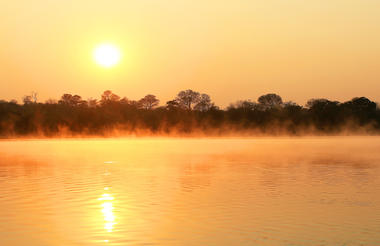
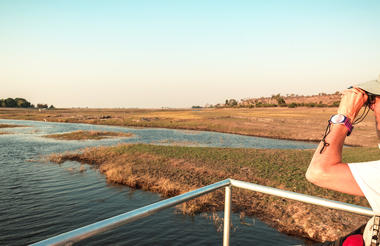
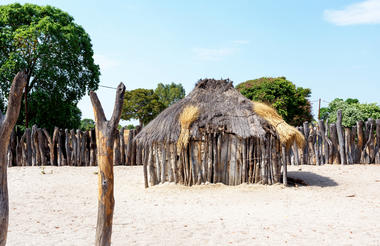
RUNDU - DIVUNDU (ca 193km / 01:55h)
After breakfast, drive along the Trans-Caprivi Highway to the lodge on the Kavango. The Caprivi, sometimes called the Caprivi tip, is a narrow promontory in northeastern Namibia where the largest settlement is Katima Mulilo. It shares its borders with 4 countries, namely Angola, Botswana, Zambia and Zimbabwe, which share the rivers Okavango, Kwando,
Chobe and Zambezi are.
On the optional boat trips you can observe the amazing birdlife of the Caprivi.
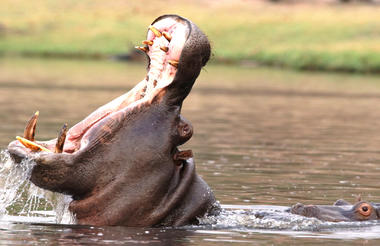
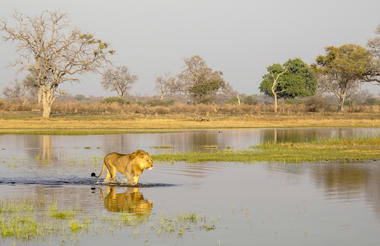

DIVUNDU
You have time for full day game drives in Mahangu National Park or take a trip to the rapids of Popa Falls.
Bwabwata National Park (formerly Caprivi National Park and Mahango National Park) is a national park in Namibia. It covers almost the entire area of the western tip of Caprivi in Namibia. In the north and south it is bordered by the Namibian state border (Angola in the north and Botswana in the south), in the west by the Okavango (Bagani) and in the east by the Kwando. East of the Kwando is the Mudumu National Park. The park was proclaimed in 2007 as a merger of the Caprivi National Park and the Mahango National Park. Caprivi National Park was founded in 1968, Mahango National Park in 1986. For a long time, South African troops were stationed here, pursuing rebels in neighbouring Angola.
The Bwabwata National Park is home to a large number of animals, including four of the famous "Big Five": lion, leopard, elephant and buffalo. Crocodiles and hippos can be seen along the river courses, as well as many water birds. The marshes of the Kwando are known for the large herds of elephants that cross the area (sometimes 100 animals and more). In addition, there are numerous antelope species that can only be found here.
Besides there are bushbuck, horse and sable antelope, lyre antelope, blue wildebeest, impala, kudu and rare oryx, but also buffalos, which stop here on their migration from the Caprivi. Finally there are also a number of smaller antelope and small mammal species. There are also some of Namibia's last wild dogs and more than 400 bird species.



DIVUNDU - KASANE (ca. 470 km / 05:11h)
Today you reach the easternmost part of Namibia with the drive through the scenic national park to Katima Mulilo. You leave Namibia at the Ngoma Bridge border post to reach the lodge in Botswana.
During the excursions offered by the lodge you will get to know the overwhelming animal wealth of this area. In the afternoon you can either take part in a game drive or a boat trip (included in the price).



KASANE (CHOBE NATIONAL PARK)
You will have time to take part in two of the lodge's activities such as a boat trip on the river or a game drive through the nearby National Park. But you can also explore the reserves on your own.
KASANE (CHOBE NATIONAL PARK)
Today you can make an excursion to the famous Victoria Falls (the transfer to the falls is included, but any entrance fees are extra - like visa fees, etc.). Alternatively, you can do two safari activities.
Victoria Falls is a Zambezi waterfall on the border between Zimbabwe and Zambia, between the border towns of Victoria Falls and Livingstone. The Victoria Falls were declared a World Heritage Site by UNESCO in 1989. The first European to discover the Victoria Falls was David Livingstone, Scottish missionary and Africa traveller. He heard of them as early as 1851 and discovered them four years later, on 16 November 1855. He named them "Victoria Falls" in honour of Queen Victoria. The native Kololo call the waterfall Mosi-oa-Tunya (thundering smoke). The name comes from the spray mist, which rises up to 300 m and can still be seen 30 km away.
It originates because the water masses of the Zambezi flow on a width of 1 708m over a 110m steep rock wall. This makes the Victoria Falls the widest falling waterfall on earth. At high tide, up to 10 000m³/s water flows down the waterfall, in contrast to the 170m³/s during the dry season. Around the Victoria Falls there is a rainforest that owes its existence to the moisture from the constant spray. Not only in February and March, when the Zambezi carries a lot of water, there is the largest water curtain on earth. At low tide - as it happens again and again especially in drought years - only a small trickle of the otherwise raging water remains in September and October.



KASANE - NAMUSHASHA (ca. 261km / 03:10h)
The next stage of your journey will take you via the lively cities of Katima Mulilo and Kongola to the proximity of the Mudumu National Park.



NAMUSHASHA (MUDUMU NATIONAL PARK)
Explore Mudumu National Park with guided hikes, game drives and boat trips.
Mudumu National Park is a 1,009.59 km² national park bordered to the west by the Kwando River. The northeast of the park is a dry bush savannah interspersed with mopane trees and in the southwest the park is characterised by the Linyantis swamps, a landscape very unusual for Namibia: Riet islands, river courses and marshes characterise this area.
The Mudumu National Park is very rich in game and is home to lions, elephants, rare antelopes, zebras, hippos, crocodiles and over 430 bird species.
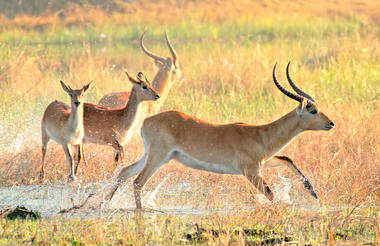
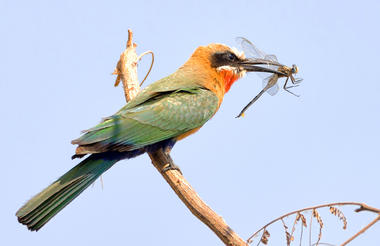
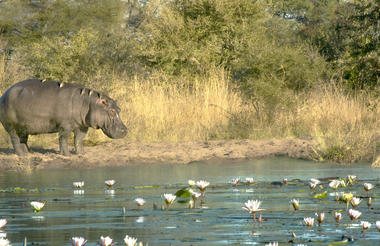
NAMUSHASHA - RUNDU (ca. 437km / 4:30h )
You drive back to Rundu via Kongola and Divundu. The Bwabwata National Park is home to a large number of animals, including four of the famous "Big Five" lion, leopard, elephant and buffalo. Most of the park is covered with savannah and dense trees. Along the rivers you can see crocodiles and hippos as well as many water birds.



RUNDU - OKONJIMA (ca. 545km / 05:30h )
Today's trip takes you via Grootfontein, Otavi and Otjiwarongo to Okonjima.
On the way you have the possibility to visit the Hoba meteorite. The Hoba meteorite is the largest meteorite found on earth to date. It is located on the grounds of the "Hoba" farm in the Otavibergen, about 20 km west of Grootfontein in Namibia. It is a national monument. The weight data vary between 50 and 60 tons. Its original dimensions were 2.70 m × 2.70 m × 0.90 m. The meteorite hit the earth about 80 000 years ago and is still in its original position. Its estimated age is 190 to 410 million years. The meteorite consists of approx. 82 % iron, approx. 16 % nickel and approx. 1 % cobalt. It also contains a number of trace elements such as chromium, gallium, germanium, iridium, carbon, copper, sulphur and zinc. Meteorites with nickel contents of more than 15 % are called ataxites.
From the impact of the meteorite no crater was preserved any more and the discovery happened coincidentally. When the owner of the land plowed his field with an ox, he heard a metallic scratching sound before the plough suddenly stopped. Shortly afterwards, the meteorite was uncovered and identified and described by the scientist Jacobus Hermanus Brits.
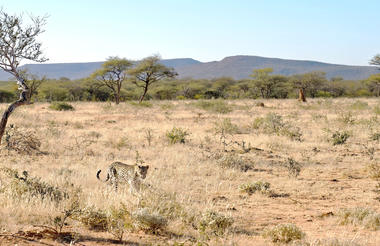
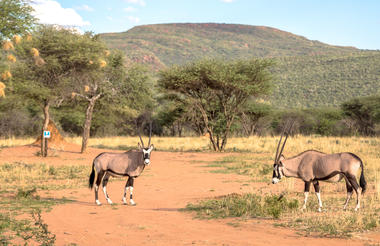
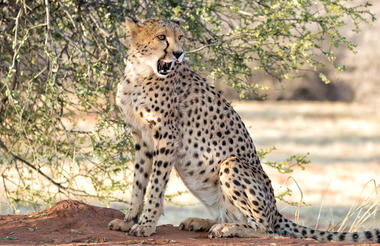
OKONJIMA
In the morning, as well as in the afternoon, you can participate in the Lodge's varied program.
Okonjima is the home of the AFRICAT Foundation. Namibia is home to the world's largest wild cheetah population; the majority of native cheetahs and leopards live in an area of 7000 economically run farming communities. The large predators partially hunt the grazing animals, which are unprotected and free on the farm grounds. As a result, predators are often seen as a threat to grazing animals and are targeted for hunting and killing. AFRICAT takes in a large number of captive big cats that were no longer desired by other facilities.
Among the big cats rescued, examined and rehabilitated by AFRICAT are cheetahs, leopards, lions, desert lynx, wild dogs and hyenas. Okonjima is a family-run company. Wayne, Donna and Rosalea Hanssen are the owners and live on the farm. They bought the farm from their parents, Val and Rose, in 1993 and converted the cattle farm into a conservation project.
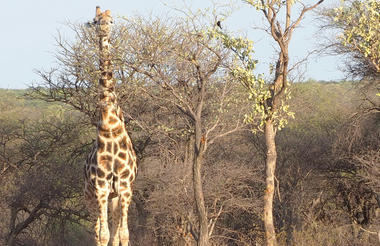

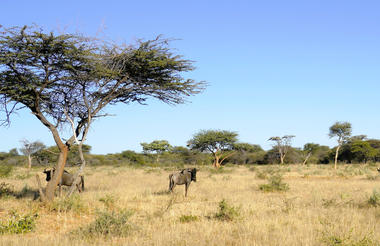
OKONJIMA - WINDHOEK - AIRPORT (266km / 03:00h)
After a leisurely breakfast, we return to the state capital, Windhoek. On the way you have the possibility to visit a woodcarver market in Okahandja. Afterwards you will drive to the airport and return your rental car.



